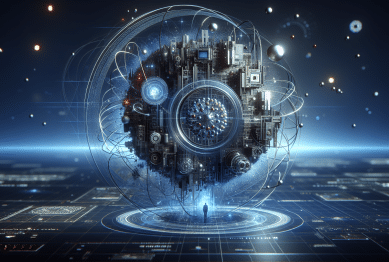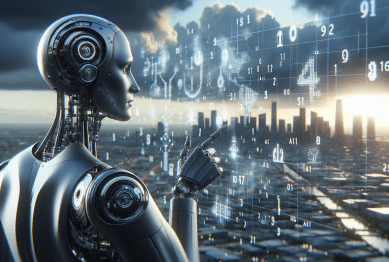Explore how artificial intelligence is reshaping interactions, work, and decision-making across daily experiences. This guide reveals practical uses of AI, impacts on society, and where its subtle influence may surprise you, all in easy-to-follow language for readers curious about technology’s reach.
How Artificial Intelligence Shapes Modern Communication
Artificial intelligence, often called AI, is transforming communication in subtle yet powerful ways. Many messaging platforms now rely on AI algorithms to suggest replies, correct spelling, and filter spam. When you type a message, predictive text tools can offer suggestions in real time—speeding up conversations and reducing mistakes. This is not only convenient but also demonstrates how machine learning adapts to each person’s habits, making digital dialogue quicker and smarter over time. AI also enables translation features that bridge language gaps, allowing users from across the world to understand each other instantly on social platforms.
Beyond text, AI-driven chatbots are redefining customer service. When users reach out for help online, they often interact with AI first—either through voice assistants or typed chats. Many companies now use these bots to answer common questions, track orders, and even handle simple complaints without human intervention. This approach not only saves time for the customer but also allows businesses to respond more quickly and accurately. Such automated systems are improving as they learn from every interaction, making digital communication more intuitive every day.
AI technology also filters and prioritizes the information you see. From social feeds to email inboxes, algorithms help manage digital overload by predicting what is most relevant to each user. This personalized curation can help users focus on important messages and updates. However, it is important to stay mindful that these systems make choices for you, subtly shaping what gets your attention. Responsible use and understanding of this technology can help individuals navigate the modern flow of information with greater confidence. (Source: https://www.pewresearch.org/internet/2018/12/10/public-attitudes-toward-computer-algorithms/)
AI in Healthcare: Quiet Revolution in Diagnostics and Care
Behind the scenes, artificial intelligence is making strides in healthcare diagnostics and patient care. Medical professionals now use AI-powered systems to analyze X-rays, MRIs, and other medical images with remarkable speed and accuracy. Algorithms can scan thousands of images for subtle signs of disease, often highlighting details that may be missed by the human eye. Such technology supports early detection of conditions and helps medical staff prioritize care. Innovations like these are beginning to improve outcomes for patients worldwide while supporting clinicians with critical decision-making tools.
AI support does not end in imaging alone. Virtual assistants are assisting with scheduling, medication reminders, and symptom assessment. Some apps even monitor vital signs using wearable devices, alerting users and their healthcare teams if something looks unusual. The information is processed via AI to make actionable suggestions or flag possible health risks. While no single solution fits every need, these developments reflect how AI is embedded into healthcare infrastructure and becoming a silent partner in management and prevention strategies.
Concerns about privacy and reliability remain. Patient data is sensitive, and developers must design AI systems with robust protections. Still, as AI continues to evolve, it promises efficiency and accuracy that can ultimately support safer, more tailored treatments. Transparency and clear communication about how these systems operate are essential to building trust and ensuring ethical use. Learn more about responsible AI healthcare applications from trusted medical associations and ongoing research. (Source: https://jamanetwork.com/journals/jama/fullarticle/2761503)
Smart Technology at Home: Everyday AI Applications
Walk into a modern home and you may find artificial intelligence working in the background. Many smart devices—like thermostats, speakers, and security systems—utilize machine learning to adapt to routines. For instance, a smart thermostat learns user preferences, adjusting temperature for comfort and energy savings. Voice-controlled assistants can manage reminders, shopping lists, and media with simple commands, all thanks to natural language processing. These automated systems create a more personalized and seamless living environment every day.
Home security has also evolved with AI-enabled features. Cameras can now identify familiar faces and send alerts about unusual activity. Some doorbell systems use AI to distinguish between a package delivery and a wandering animal. These advancements not only improve safety but offer convenience and peace of mind without constant human monitoring. As smart home technologies grow, they increasingly integrate with other appliances, learning routines for lighting, cleaning, and entertainment. This interconnectedness saves time and helps streamline daily living.
However, introducing more AI into homes brings up questions about data collection and privacy. Many prefer more control over what is shared and with whom. Manufacturers often provide adjustable privacy settings and transparent data practices so that users can make informed choices. Staying updated about security practices and understanding device permissions ensures that the benefits of AI—and the comfort and efficiency it brings—are balanced with peace of mind. (Source: https://www.consumerreports.org/electronics-computers/privacy/a-guide-to-smart-home-devices-privacy-a9751671181/)
AI in Transportation: Smarter Roads and Vehicle Innovation
Transportation is another area where AI stays mostly behind the scenes, yet delivers significant improvements. Traffic control systems in many cities use real-time data to optimize traffic lights and reduce congestion. This helps improve the flow of vehicles and minimizes delays. Public transit systems can predict arrival times, update routes dynamically, and even suggest alternate travel options based on live conditions. These features make getting from point A to point B more predictable and efficient for millions each day.
The influence of artificial intelligence is visible in vehicle safety systems, too. Many modern cars are equipped with AI-driven technologies, such as adaptive cruise control and lane-keeping assistance. Cameras and sensors collect continuous data about the road, allowing vehicles to respond quickly to obstacles, other cars, and changing speed limits. As more data is gathered, these systems increase accuracy and limit human error—potentially reducing accidents and making roads safer overall.
As autonomous vehicle technology continues to develop, AI’s role will become even more central. Long-term, smart infrastructure could connect with driverless cars for smoother traffic management and less pollution. While completely autonomous roads are not widely available, these trends highlight how AI steadily shapes safer and more convenient journeys—with careful consideration of safety standards and regulatory oversight. (Source: https://www.nhtsa.gov/technology-innovation/automated-vehicles-safety)
Artificial Intelligence and Everyday Decision-Making
It is easy to overlook how often AI influences daily decisions. Many streaming services recommend shows and music using deep learning algorithms. Browsing websites or shopping online? Product suggestions are refined by AI based on your previous searches and interactions. This means content is personalized, aiming to match unique preferences. Such tailored experiences boost convenience and enjoyment, letting users discover new favorites with minimal searching.
AI also powers tools people use to make financial choices. Banking apps can review spending trends and offer budgeting tips. Some investment platforms harness machine learning to manage portfolios, track performance, or alert users to potential risks. These systems process huge amounts of market data, making suggestions grounded in patterns and forecasts. These features are examples of enriching, accessible technology designed to support a wide range of financial goals—whether saving, budgeting, or investing wisely.
Still, relying on automated suggestions requires an understanding of their strengths and limitations. Algorithms do not always get it right and may overlook context or unusual needs. Examining recommendations and making independent choices remain essential. As AI grows more sophisticated, public awareness and digital literacy will ensure that these tools truly empower rather than limit decision-making. (Source: https://www.consumerfinance.gov/about-us/blog/machine-learning-and-artificial-intelligence-in-consumer-finance/)
Ethical Considerations: Transparency, Bias, and the Human Touch
With AI’s footprint expanding, it raises questions about ethics, fairness, and transparency. Algorithms sometimes reflect unintended biases present in their training data. As a result, outcomes in areas such as hiring, lending, or law enforcement may unintentionally disadvantage certain groups. Many institutions are working to address these issues by requiring open, auditable AI systems and ongoing refinement of datasets. Increased oversight helps ensure that AI serves broad public interests rather than reinforcing inequality.
Transparency is just as important as accuracy in AI development. Users should know when and how artificial intelligence is involved in decision-making. Governments and tech companies are developing policies for explainable AI, which makes algorithms’ reasoning visible and understandable to people affected by automated decisions. Such measures can build trust in these systems and encourage responsible technology adoption. Ongoing research continues to examine ways to measure, reduce, and avoid bias, fostering inclusion and fairness at every stage.
The human role in AI cannot be overlooked. Machines can streamline processes and reveal new patterns, but judgment, empathy, and context still belong to people. Cultivating digital literacy and awareness equips society to use AI for social good—finding solutions to real problems without losing sight of personal agency and ethical considerations. Readers interested in learning more about the wide landscape of AI ethics can explore research from global organizations focused on responsible technology. (Source: https://aiethics.princeton.edu/)
References
1. Pew Research Center. (2018). Public attitudes toward computer algorithms. Retrieved from https://www.pewresearch.org/internet/2018/12/10/public-attitudes-toward-computer-algorithms/
2. Topol, E. J. (2020). High-performance medicine: the convergence of human and artificial intelligence. JAMA, 323(6), 509-510. Retrieved from https://jamanetwork.com/journals/jama/fullarticle/2761503
3. Consumer Reports. (2022). A guide to smart home devices and privacy. Retrieved from https://www.consumerreports.org/electronics-computers/privacy/a-guide-to-smart-home-devices-privacy-a9751671181/
4. National Highway Traffic Safety Administration. Automated Vehicles for Safety. Retrieved from https://www.nhtsa.gov/technology-innovation/automated-vehicles-safety
5. Consumer Financial Protection Bureau. (2019). Machine learning and artificial intelligence in consumer finance. Retrieved from https://www.consumerfinance.gov/about-us/blog/machine-learning-and-artificial-intelligence-in-consumer-finance/
6. Princeton University Center for Information Technology Policy. AI Ethics. Retrieved from https://aiethics.princeton.edu/









